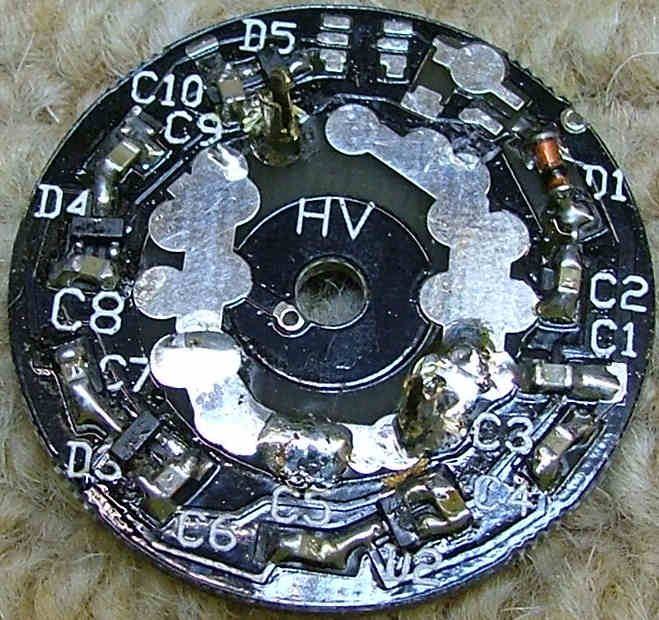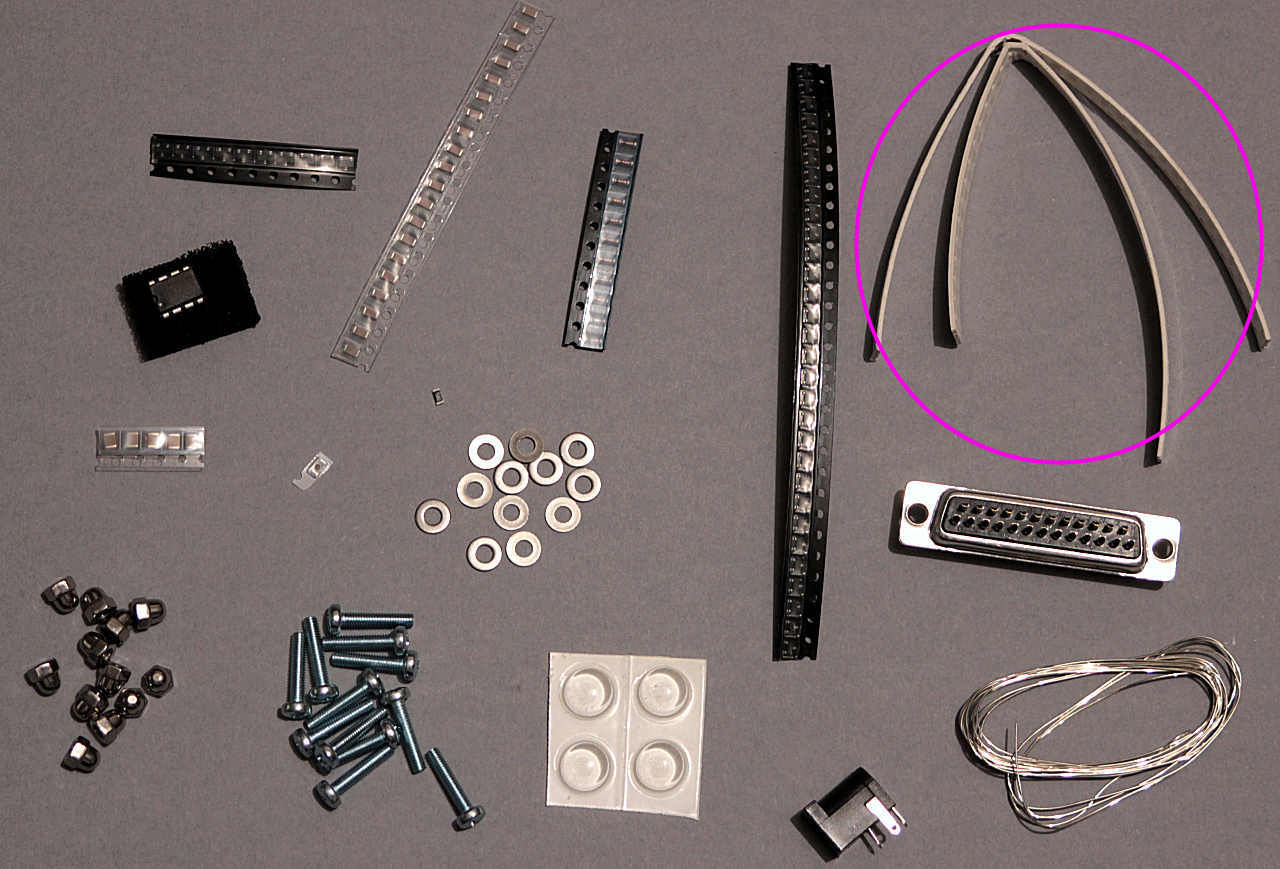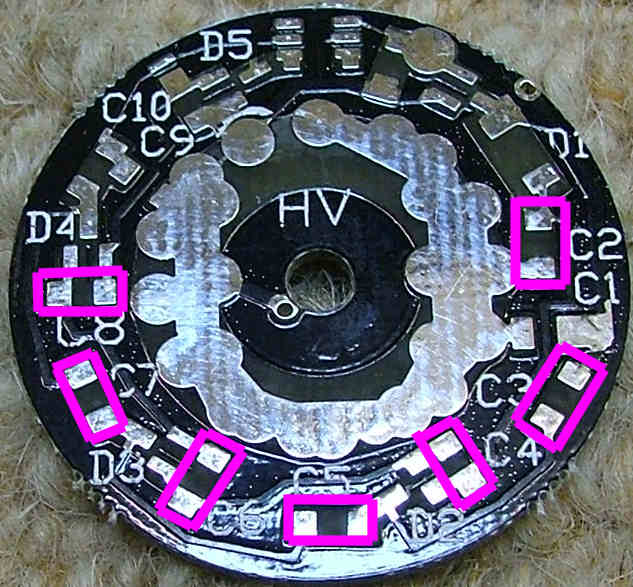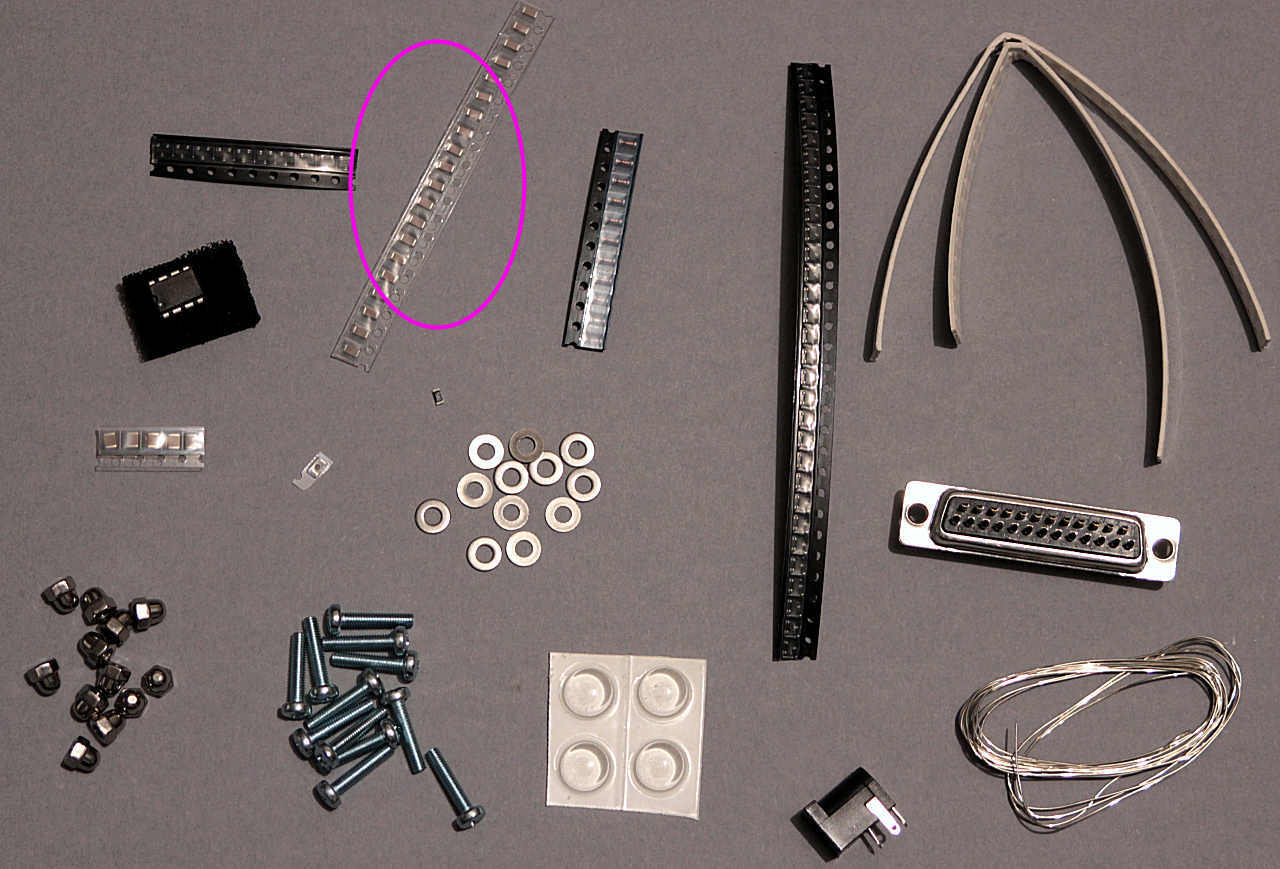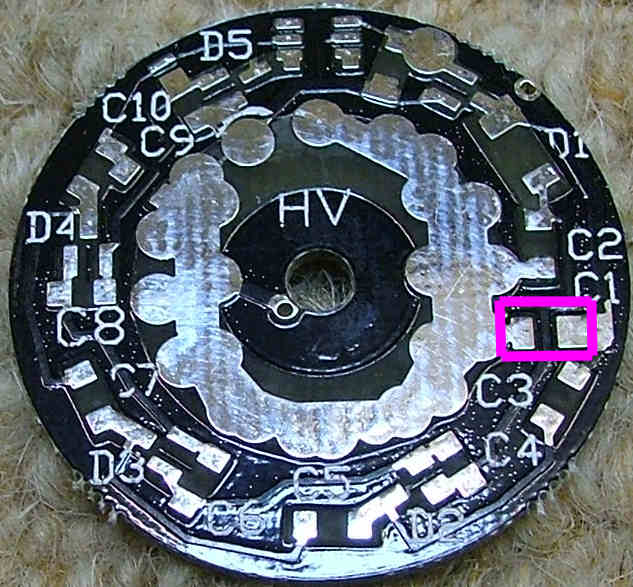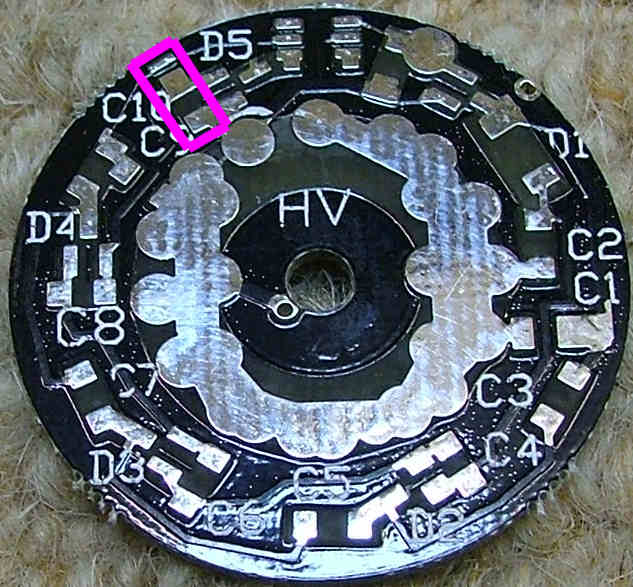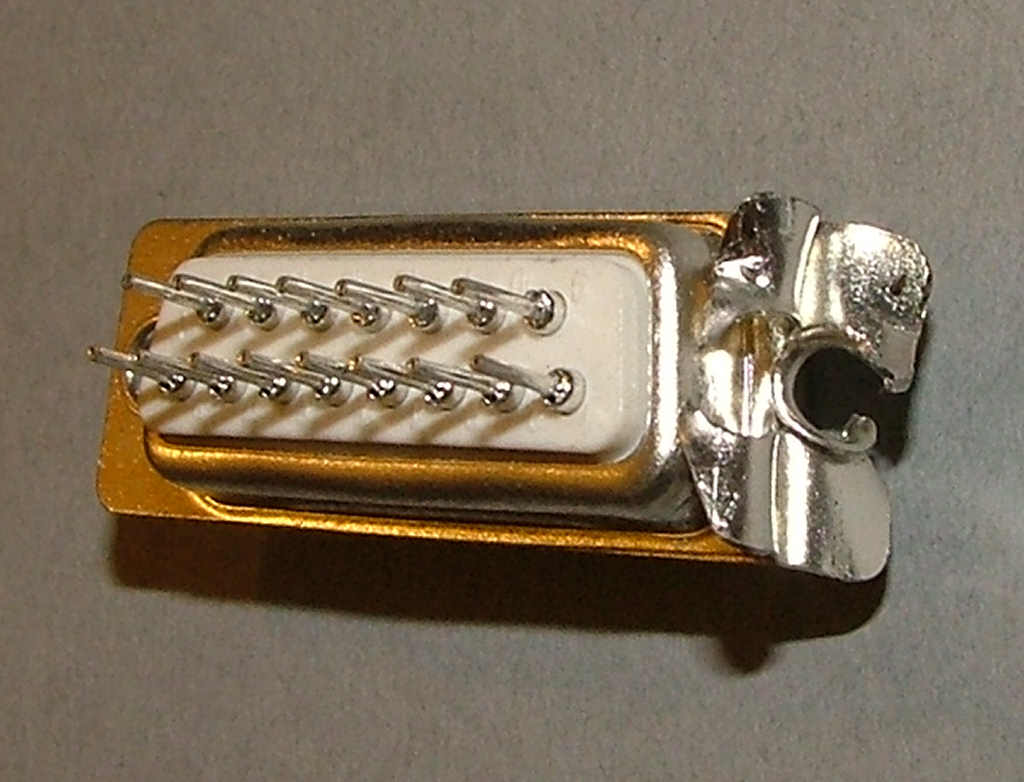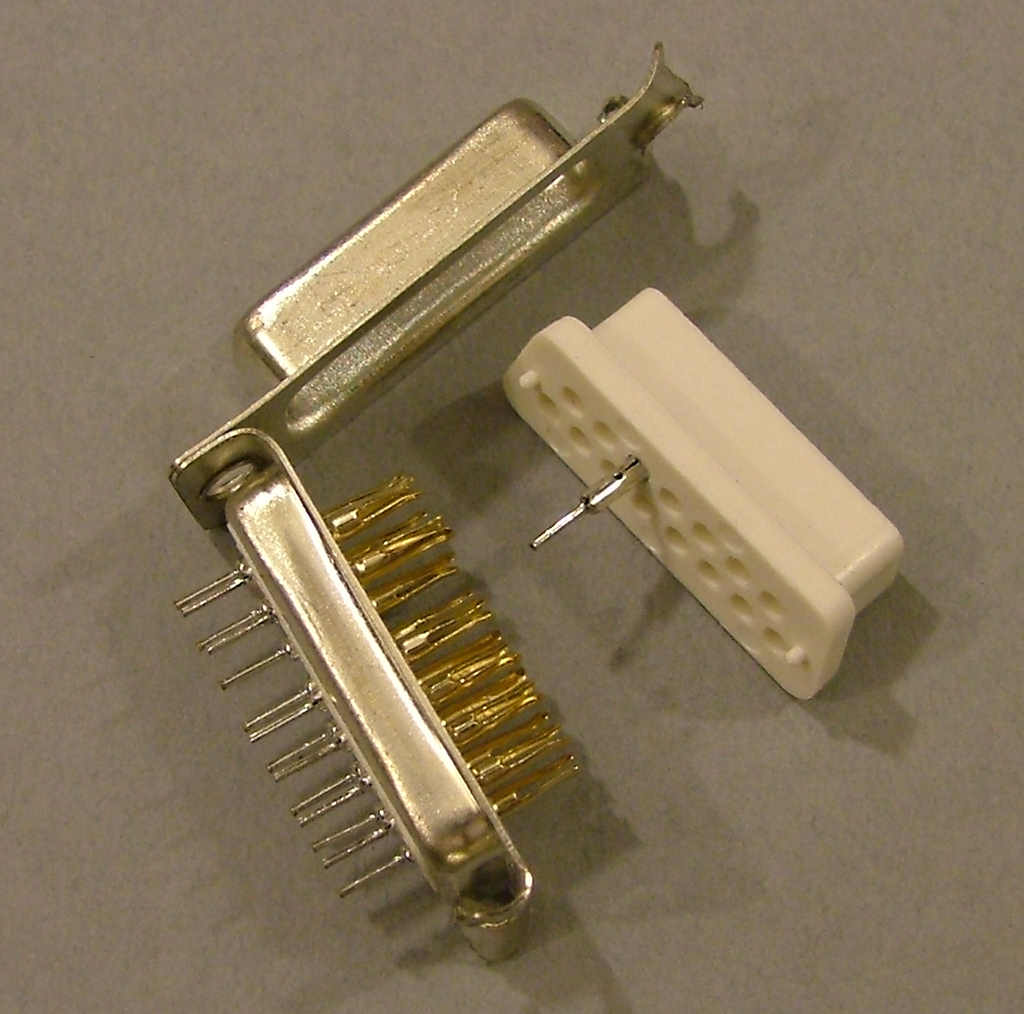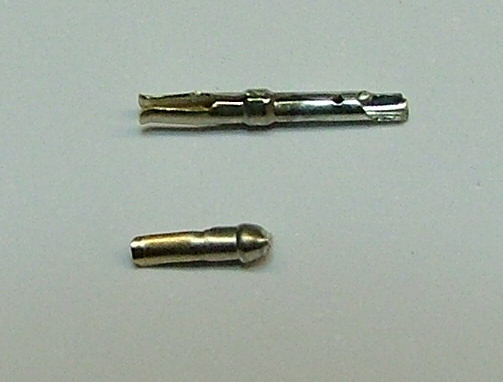For this you will need the BAV99 diode strip, 10n capacitor strip(s), 1n capacitor strip, the BAV103 strip and the 9x circular PCBs supplied bolted together. Enough components should be included for 10 PCBs though only 9 are built.
30x Diode packs - Three legged black rectangles with text etched on the top surface. These are polarised and must face the same way as in the photographs with the text facing up.
10x Glass Diodes - Copper-orange glass cylinders with a black band marking one end. These are polarised and must face the same way as in the photographs.
70x 0.1uF Capacitors - Beige rectangles with solder on either end, not polarised. Seven of these are used on each board.
10x 1nF Capacitors - Grey rectangles with solder on either end, not polarised. One of these is used on each board.
